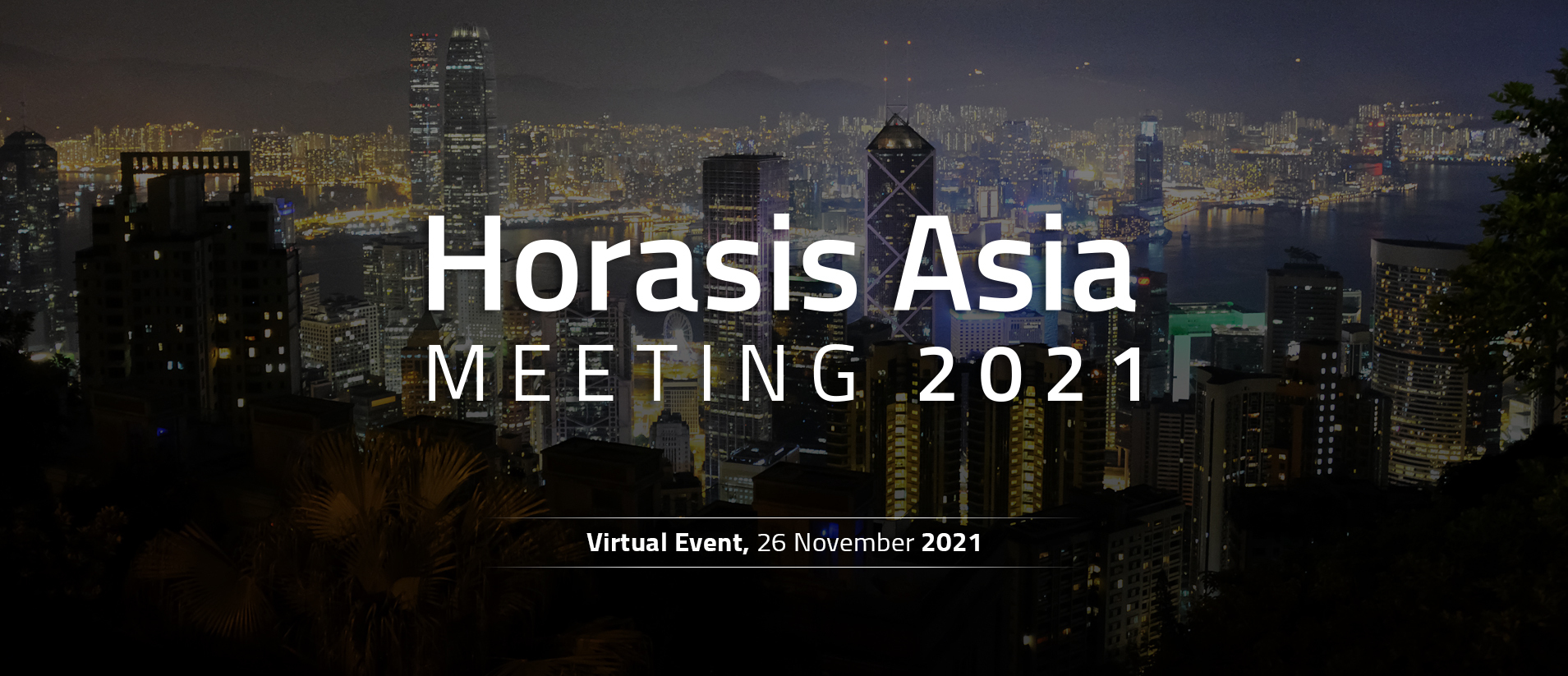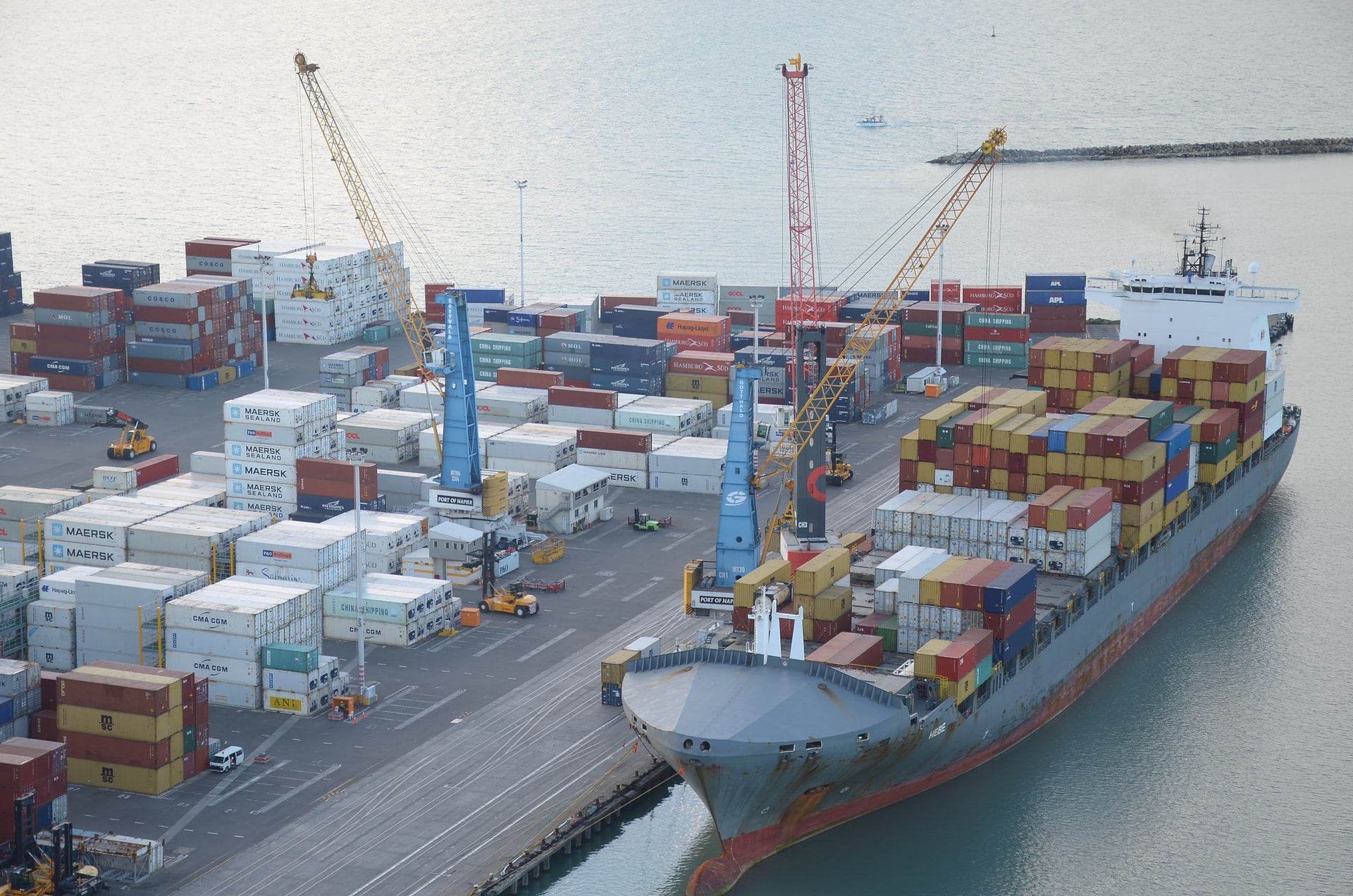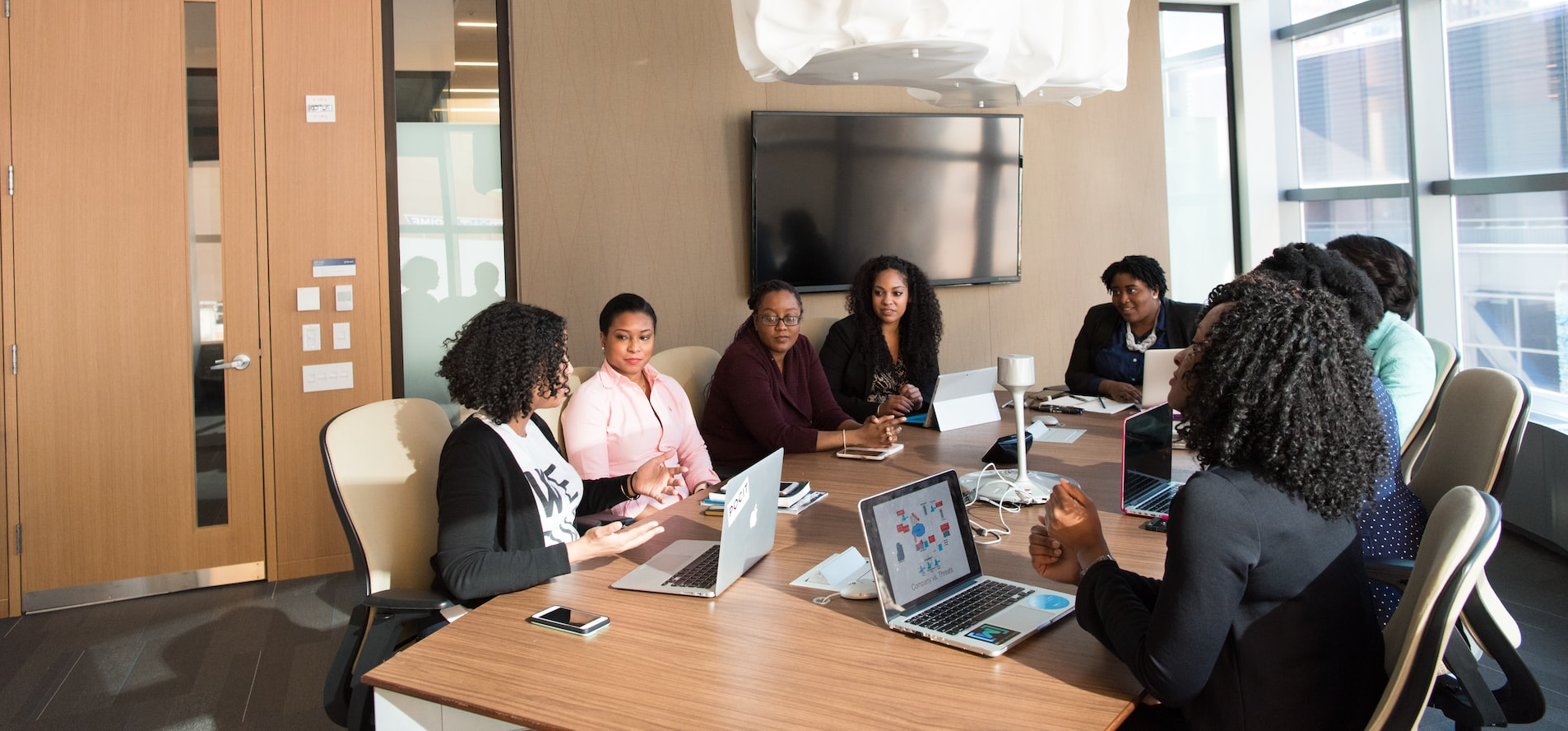Summary of the 2021 Horasis Asia Meeting
Horasis held its Horasis Asia Meeting on 26 November, as a virtual event. About 400 of the foremost business and political leaders from Asia and the world gathered to discuss the profound economic, political and social disruptions caused by COVID-19 and other forces. The delegates interacted with key political and business leaders to develop solutions addressing the current crises, and to shape a durable economic system for Asia’s post-COVID future. The annual Horasis Asia Meeting is Asia’s premier gathering of the region’s most senior leaders from business and government.
Managing disruptions
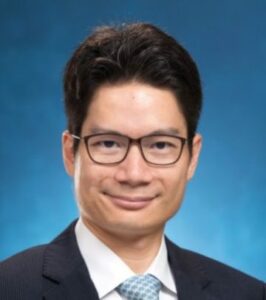
Joseph Chan, Under Secretary for Financial Services and the Treasury, Hong Kong
Well before the COVID pandemic confused the world’s supply chains, they were being disrupted by trade disputes. The friction created by the US extrajudicial laws ensured that many firms did not extend their supply contracts as they feared a legal response. This has been of long-term concern, but recently escalated when certain Chinese electronics forms were put on the banned list. Their absence hampered not only trade inside China, but globally as many overseas electronic components are built into many assemblies. That trend was accelerated as we entered the age of the Internet of Things (IoT). The slowed or halted delivery of electronics has meant the closing of new product lines – illustrated by second-hand car prices rising quickly. Many investors have recently been attracted into Asian nations, simply building on former supply chains and building factories using well-trained local staff. Joseph Chan, Under Secretary for Financial Services and the Treasury, Hong Kong SAR opined that “keeping local talent active and developing is very important. So is an open legal system based on a global freedom of movement against which COVID pressed with its mandatory isolation”. Taro Kono, Member of Parliament, Former Minister of Defence and Foreign Affairs, Japan recalled after WW2 the US was so economically strong it could run a hub & spoke trade across the Pacific region. But now Asia has become much stronger, and with its new free trade accords is changing away from the US-hub to new regional systems.
Preeti Sinha, Executive Secretary, United Nations Capital Development Fund, United Nations noted that the UNCDF had a good Asian overview and was looking at a circular investment model to help link small and medium enterprises (SMEs) though new physical and digital
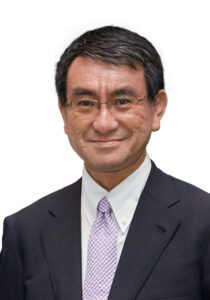
Taro Kono, Member of Parliament, Former Minister of Defence and Foreign Affairs, Japan
infrastructures to global trade. Cursory research shows that the world’s trade and commerce begin in SMEs, but the pandemic has sharply focused the thoughts of many business and government leaders on the complexities of communication with SMEs, their financing, and the forwarding their goods via supply chains within each distinct sector: the whole represents the maelstrom of VUCA. Emil Dardak, Vice Governor, East Java, Indonesia described this complexity in relation to the top industries in and around Surabaya, the capital of East Java. The city has good infrastructures yet close to the regional capital are poor infrastructures. Digital penetration is high, but there is little correlation between the hyper-local economy with the global economy: the SMEs must have their absorptive capacity boosted by education and financial aid. But how to start in this climate of VUCA?
Managing complex situations
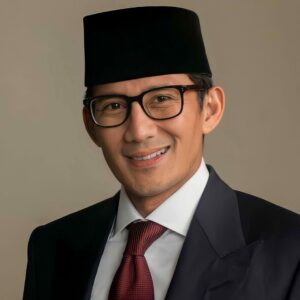
Sandiaga Salahuddin Uno, Minister of Tourism and Creative Economy, Indonesia
The pandemic spreading out of Asia into Europe, the US and rapidly to all nations has thrown complex physical, financial and geo-political issues into close proximity. Its many aspects are described succinctly by a collective acronym – VUCA – said Sandiaga Salahuddin Uno, Minister of Tourism and Creative Economy, Indonesia, saying “volatility, uncertainty, complexity and ambiguity are all represented in varying amounts across the issues facing governments and businesses.” Presently we are exposed to tighter interactions between complex streams of problems that once might have been addressed somewhat linearly, but finding a starting point to solve the interconnected global issues is difficult, as in each nation VUCA is perceived differently. As the meeting dispersed, emphasizing VUCA, a new variant prompted global panic – shutting down global airlines, and forcing nations to consider mandatory vaccination and even national lockdowns. The Omicron variety, although with limited verifiable data, seems to be very highly contagious, but much less severe than earlier varieties.
Philipp Mueller, Head Core Government EMEA, Amazon Web Services, Germany illustrated these complexities while talking of the 3-S Challenge: Sovereignty, Sustainability, and Social Impact. He discussed how governments and regulators are attempting to create a fair taxation regime for multi-national firms like Amazon Web Services (AWS) since many citizens perceive the large tech-firms as under-payers of tax. A trend to automate production was observed before COVID is being accelerated with several outcomes, added Anir Chowdhury, Member of the Prime Minister’s National Digital Task Force, Bangladesh. There is a social need to support those workers who thought they were furloughed, only to find they had been outed by a machine. Presently there are few opportunities to find new work given the global slowdown, but soon the working knowledge of the unemployed will become outmoded, and they will need retraining to higher skills levels to work in an automated world. In more general terms, the globe is lacking sufficient education in STEM skills (science, technology, engineering and mathematics). Simply put, a world predicated on AI systems needs precise and intensive care for its continued operation and for new infrastructure systems to be developed.
The geo-politics
The overall geopolitical systems are based on historical divergencies. The term “Asia-Pacific,” which was first coined in the United States, excluded South Asia. The Asia-Pacific Economic Cooperation (APEC), which staged high-profile annual summits from the 1990s through the 2010s, does not include India as a full member. As for India itself, following the end of the Cold War, it began to come up with new geopolitical concepts that reflected the dramatically changed international environment. There is a changed inclination presently, though still complex – the notion of the Indo-Pacific has recently become widely used, particularly in the United States, India, Japan, and Australia, and has almost replaced the earlier term “Asia-Pacific.” In Russia, this change of geopolitical terminology is usually seen through the prism of the U.S.-China confrontation and Washington’s determination to strengthen America’s position in that part of the world by engaging India on its side. Yet India is developing its own conceptual constructs, which may carry the same name, but are based on New Delhi’s view of the world and national interests.

Sansern Samalapa, Vice Minister of Commerce, Thailand
According to Rekha Sethi, Director General, All India Management Association (AIMA), India’s future ambitions depend on the trajectory of its economy. By opting out of the Regional Comprehensive Economic Partnership free trade agreement, New Delhi has forfeited an opportunity to participate in a vital new economic grouping that could have added zest to its Indo-Pacific strategy. Pramod Bhasin, Chairman, Clix Capital Services, India wondered if “India learned to co-operate could it be a ‘big brother’ look after Asia’s development of a seamless alignment of nations?” While India has to focus more on looking east. Contradicting this direction, Harshvardhan Neotia, Chairman, Ambuja Neotia Group, asked if India ought to have a more calibrated engagement – with Russia though it is a conundrum; with Pakistan and with Afghanistan, maybe the Taliban – to build a new westward infrastructure. He also wondered if India is making better bridges after it opted out of ASEAN knowing there is a space to re-open. The panel chair, Sunil Kant Munjal, Chairman, Hero Corporate Services, India noted that there is a worrying antagonism across Asia as its geo-politics are complex and negotiations take a long time.
Roger King, Founder and Chairman, ODS Holdings Inc., Hong Kong wonders if Xi Jinping will again look outward, but who perhaps realizes China has to be self-sufficient with less dependence on exports. As a contrast, looking at Chinese business development following the return of many of the 300,000 Chinese students who are studying in the US – they say on their return to China they don’t wish to re-join their family business but wish to be entrepreneurial. Is a big question for their business inheritance and general management as most of the businesses in China, as elsewhere in the world, are SMEs. Given the aging population the young child has to look after 4 grand-parents and don’t wish to, as they look to entrepreneurship even though they recognise health care is an underfunded business in China. George Wang, President and Chief Executive Officer, E-BI International, USA believes China will continue to grow despite US. He thinks the sensitive uppermost issue is the demonization of China, especially in the US goaded by its politicians.
China’s influence has been developed by its B&R
President Xi Jinping initiated the B&R Initiative in 2013 as a belt-way of roads, railways and sea-ways inter-connecting development hubs extending from China. It has grown from a Sinocentric project to one of linking most nations by trading routes and by initiating development hubs. It is clear today that many of its routes are only peripherally aligned to the original B&R.
Initially only 17 trains set off to Europe and returned empty, now 12,000 block-trains connect 60 Chinese cities to 150 cities in EU via the 15 day trip. The B&R acts as a magnet for shippers throughout southeast Asia, Korea and in intermediate nations like Russia to offer regular timetabled freight. Across the B&R noted Donny Huang, Founder and Managing Director, 4stones, China, 80% of SOE along the routes are initiated by the presence of the B&R, these even if not connected yet via time-tabled freight connections. They have built maybe 30,400 projects globally which is enabling a broadly defined South Asia to be the globes largest economic partners – not US using its post-WW2 hub model.
Charles Tang, President, Brazil China Chamber of Commerce, Brazil offered a Latin American perspective of B&R. Brazil is the world’s largest exporter of soyabeans and animal proteins taking 45 days shipping via S Africa to China. Now China planning a rail link to Peru or Chile – so cutting the trip to 15 days: much rests on the viability of the Bi-Oceanic rail link out of Rio De Janeiro as an intermediate initiator of Latin American commerce. Especially copying how China has enabled Africa to become a fast economic grower by ‘opening up’ landlocked nations so lifting 100s millions from poverty. Presently the B&R is not only about trade but it must be considered in the broader context of the UN’s SDGs, added Winston Mok, Private Investor and Columnist, South China Morning Post, China.
Asia and climate change
COP26 highlighted the need for a more open conversation on the issues pertaining to transition finance to mitigate climate change – there are many forces at play. These stem from activist investors pressing those investing or CEOs looking for investments to restrict the flowing cash to that derived only from ‘green’ sources. This is difficult explained Steven Beck, Head of Trade & Supply Chain Finance, Asian Development Bank, Philippines since all Asian nations differ in their needs and abilities/timeframes. Oil as both a transport fuel and as a chemical stock produces considerable pollution and alternatives do not exist in large volumes. Banks and venture capitalists need training to be able to judge and manage green investments, especially as we lack full standards & protocols. It would be useful to focus on the digitalization of trade, seamless with no friction (of paper). Second, more legislation is needed so nations accept and recognize electronic documents. And this expects much at factory level.
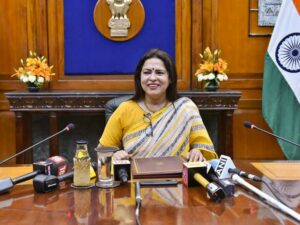
Meenakshi Lekhi, Minister of State for External Affairs and Culture, India
King Au, Executive Director, Financial Services Development Council Hong Kong, Hong Kong is optimistic and thinks that Hong Kong might provide a guide for China though the greening of the Greater Bay Area. And Kim-See Lim, Regional Director East Asia and the Pacific, International Finance Corporation, thought that Blue Bonds designed to protect oceans, supported by the World Bank would be a positive adoption by Asian sea-faring nations. Meanwhile both Satoshi Ikeda, Chief Sustainable Officer, FSA- Financial Services Agency of Japan, Japan and Sung-hyun Park, Chief Strategy & Sustainability Officer, Shinhan Financial, Korea said that corporates must change their behaviour, perhaps urged by the pressure of a carbon tax and eventual neutrality goals. And, continuing with the theme that Asia must search for its own financial levers Michael Walsh, Secretary General, PBEC, Hong Kong thought PBEC might continue the discussions of this panel through to the next Horasis meeting in 2022.
Sustainability is a major theme across Asia,
Erik Berglof, Chief Economist, Asia Infrastructure Investment Bank, China agrees this is tied into ‘ownership’ of plans as well as getting financial institutions to learn what is needed to be ‘green’ so as to drive effective credit lines through businesses. In his opinion he thought Asia was behind Europe and the US. Naushad Forbes, Co-Chairman, Forbes Marshall, India considers talking only from an Indian perspective, any single nation perspective, is a bit limited: it’s a global problem – for instance, carbon neutrality. Indian government creates complex policies that have difficulties in local action; while States have limited capacity. We must rely more on young people with their energy and their ideas to alter the world for the better to support their distant futures. He offered one interesting note – the government offering free LED light bulbs. This saved electricity continually, and also delayed the need to build more electrical generation capacity.
Tatsuo Hatta, President, Asian Growth Research Institute, Japan created a policy model to control local air and water pollution with the help of central government. This prepared a self-reinforcing effect. And Vinod Sekhar, Chairman and Group Chief Executive Officer, Petra Group, Malaysia noted without education we could not create a clear base to help people onwards – we will not get Asian/ASEAN economic integration as the key element across divergent nations. It is vital to rapidly find a workable pragmatic and logical solutions rather than continued talking. Must have community input with businesses as champions. And to educate locals in nearby nations to change to different crops that will yield more profits eg swap palm oil in Indonesia for rubber.
Securing energy security during transition is a huge task. India and China are no way comparable suggests Pranav Bhanage, Chief Executive Officer, Petronas Lubricant (India), India. But everywhere future energy growth needs to be managed efficiently. The scale of Chinese operations is huge while India is still energy poor, and highly distorted. Indian States are strongly political so reducing India’s dependence on coal is difficult, whereas in China the politics are reasonably transparent and nationally coherent. Across Asia there is supply inefficiency; but for transition, India needs $1t to create a clean nation: it does not have this cash, especially after the cost of COVID.
Camille Levy, President Asia Pacific, Howden, Singapore agreed the security of energy transition supply is difficult – governments have not managed to handle the basic aspects – for instance, who will carry the costs. Scott Mackin, Managing Partner, Denham Capital Management, United Kingdom noted how insurance firms have pledged to change pollution causes to reduce their own pay-outs on disastrous events. We should not let perfection overcome the realism of beneficial change. For instance, we will have to use gas, not coal for a considerable time. Which was emphasised by Rajiv Mathur, Managing Director, The Fuel Delivery, India who informed us of the $90m market for diesel for all forms on engines – both mobile and stationary; and for space heating. Diesel, dirty as it is, will be needed for many years as transition is slow. All the while, Sreekanth Venkataraman, Energy Consulting Practice Lead, The Digital Economist, USA notes pollution producers and fuel extractors had not come to any consensual view of a carbon tax or a severance tax – and while there is no action plan, pollution continues unabated and COP26 goals will be missed.
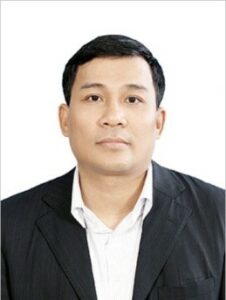
Meenakshi Lekhi, Minister of State for External Affairs and Culture, India
Bo Inge Andersson, Chief Executive Officer, Uzauto Motors, Uzbekistan noted that most nations have clearly declared no new fossil fuelled vehicles will be sold after 2040 (Sweden by 2030). Uzbekistan is a young nation with 37m people, and planning to develop rapidly will have high energy demands to be sourced by green modes. This is a bold statement, yet governments must take strong decisions – especially upon the transport sector. In passing, he noted China is biggest EV manufacturer, the US appears to dither (apart from Tesla) and Sweden aims to produce traditional and electrical vehicles having the same cost thus persuading future buyers to go green. To an extent Kris Gopalakrishnan, Chairman, Axilor Ventures, India agreed, noting governments are the only instigators of urgency for climate change – they can persuade start-ups to initiate as sustainable. Yet only 20% will be leaders, 10% will never move, and the rest are late followers.
Ranil Wickremesinghe, Former Prime Minister, Sri Lanka said that COP26 was disappointing as developed nations had offered aid, but this is not yet on the table and local finances are stressed by COVID. He asked how to bring real sustainability into trade agreements instead of just a set of words being simplified, in a sense, by quoting ‘VUCA’ with little analysis? Governments must show leadership within their political parties showing their willingness to look after the globe and not just local issues. Possibly have their eyes too firmly on their next election prospects. Importantly Girish Ramachandran, President Asia Pacific, TCS, Singapore concluded “firms have to be involved in analyses and in owning solutions. It is not just economics, but social dimensions have to be addressed.”
Shaping a new Asia
Harking back to the decades following WW2 with much of the global trade being managed according to the needs of the US there was little need to form Asian alliances. This is not the case now where Asian nations are coming to grips with a very strong China: the need for globalisation is to be reimagined, and the future reimagined. Across Asia there have been many bi-lateral and multi-lateral accords with groups exerting varying degrees of self-control as their national governments felt stronger or weaker. The ravages of COVID broke many developing accords. The initial Transatlantic Trade alliance was reinstated, and further elaborated into the RCEP and the CPTPP depending on how one views the inclusion of the Pacific nations.
The Regional Comprehensive Economic Partnership is to be fully ratified and come into force in January 2022 – it includes 15 Asia-Pacific nations. The Comprehensive and Progressive Trans-Pacific Partnership came into force once 6 of its 11 signatories had ratified it by October 2018. The two agreements are similar trade agreements, though that brief description may be a disservice: some think RCEP has the edge as it covers about half of the global population and could grow the global economy by almost $300b annually. Much of this growth will be concerned about climate change. In part because many island states and low-lying nations face large future risks of inundation due to sea levels rising. Thus, as Neeraj Kulshrestha, Chief Regulatory Officer, BSE, India argued, sustainability will be centre stage. Vijay Eswaran, Executive Chairman, QI Group, Hong Kong hopes for consensus within the Asian hubs. The SMEs that have taken the biggest kick during pandemic must be revived. But at a higher political level ASEAN must reform and draw India and China to develop Asia. Entrepreneurship across Asia is high. So, ASEAN could pull all nations to the front, especially if border controls were relaxed. Policy makers must involve business leaders as entrepreneurship finds ways around difficulties.
Oki Matsumoto, Chairman, Monex Group, Japan finds the ESGs goals are pushing everyone over all fronts. He states education is more important than the finance of firms as the former is the driver towards innovation at all levels. He thinks governments have the least understanding of business needs, must instead reinvest in education and rapidly bring forward all new tech. Herbert Chen Wu, Managing Director, The Economist Global Business Review, China suggests there are three areas in which China could better integrate: imports from outside could be a larger driver of its consumer market; it should become more concerned about its own domestic markets other than housing; and it should let big tech develop once more as they proved many spin-offs.
Tatsuo Hatta, President, Asian Growth Research Institute, Japan as well as discussing his policy model pertaining to clean away city pollution indirectly promoted Kitakyushu. This is the city that ought to have hosted the Horasis Asia Meeting as a face-to-face meeting had not COVID intervened. This city will host the 2022 Horasis Asia Meeting. Kitakyushu has a long history and is active in modern Asia developments, especially those concerning SDG growth. He welcomed all to come to Japan, especially Kitakyushu.

